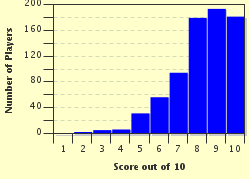Quiz Answer Key and Fun Facts
1. What blood clotting disorder is Queen Victoria blamed for passing on to many of the royal houses in Europe?
2. Anemia is a condition that involves low levels of which of the following components?
3. Aplastic anemia is a blood disorder that occurs when which part of the body does not produce enough new cells?
4. Which of the following options is a term for many types of blood cancer?
5. Polycythemia vera is a blood disorder most likely to be found in which of the following age group of people?
6. Thrombocytopenia is usually defined as having a very low count of which of the following blood components that is very important in the clotting of blood?
7. Beta thalassemia is an inherited blood disorder that is believed to have originated in what geographical part of the world?
8. Which serious blood disorder is shared by musician Miles Davis, NFL players Ronde and Tiki Barber and actor Larenz Tate?
9. Macadamia is a blood disorder in which the sufferer is born with blood that is thick, black and sticky.
10. Methemoglobinemia is a blood disorder that can cause the sufferer to appear to be blue.
Source: Author
dcpddc478
This quiz was reviewed by FunTrivia editor
WesleyCrusher before going online.
Any errors found in FunTrivia content are routinely corrected through our feedback system.

